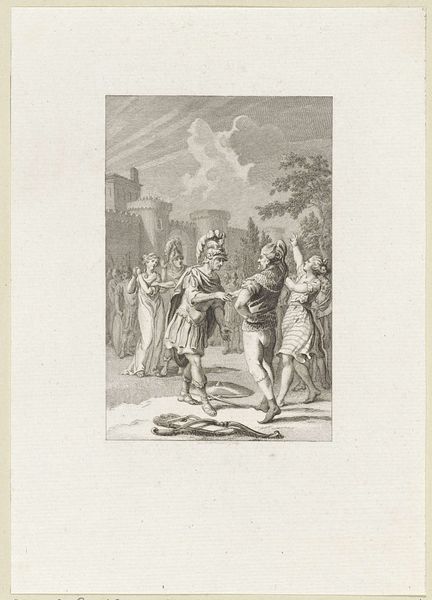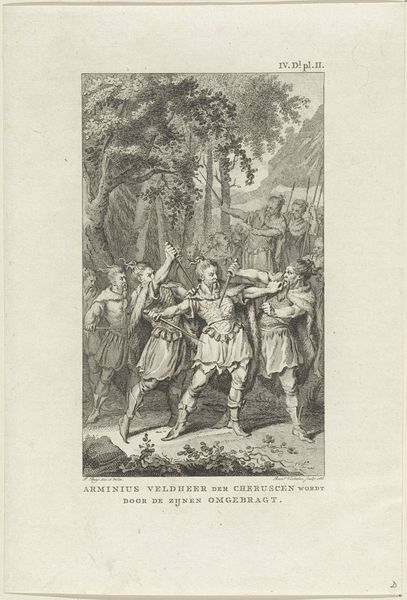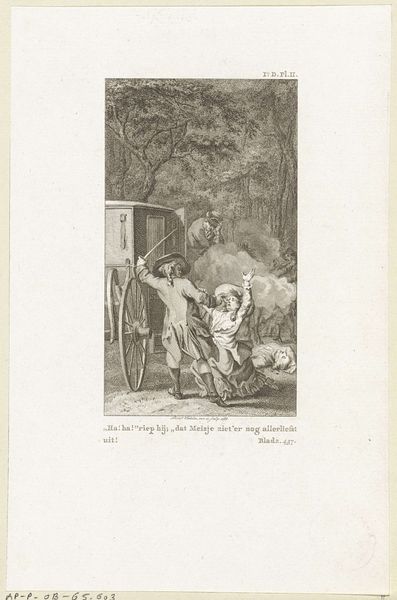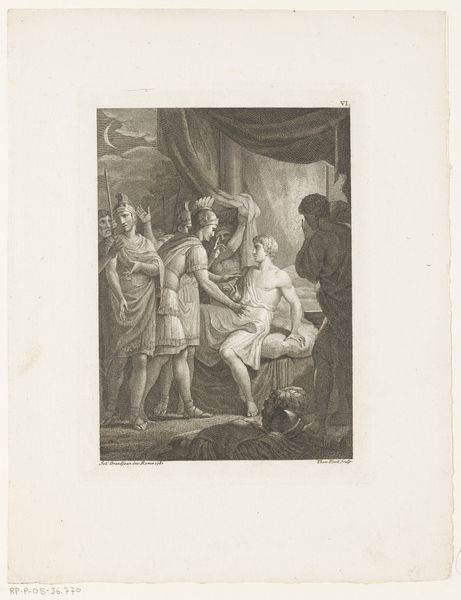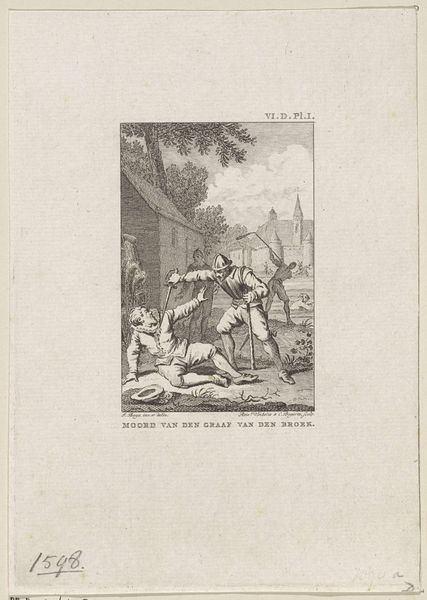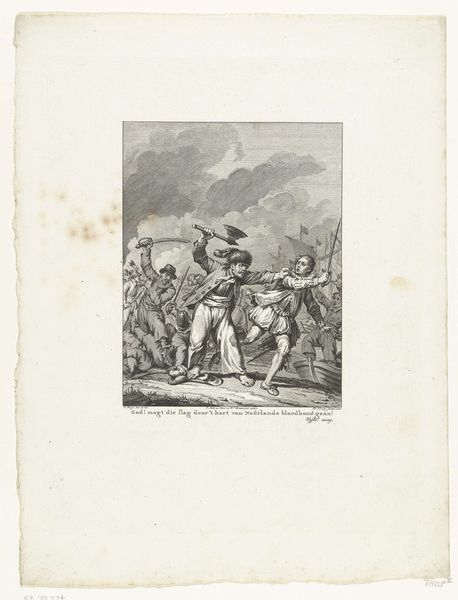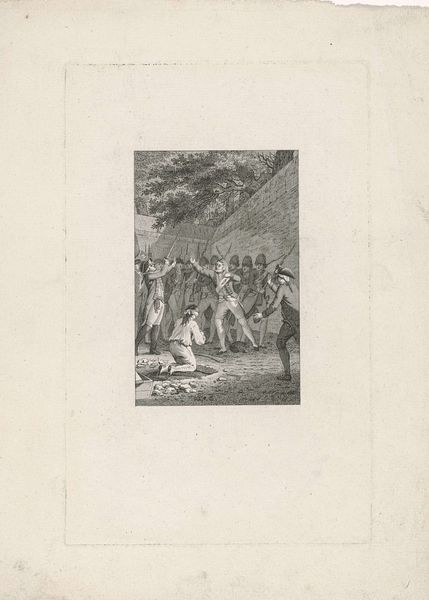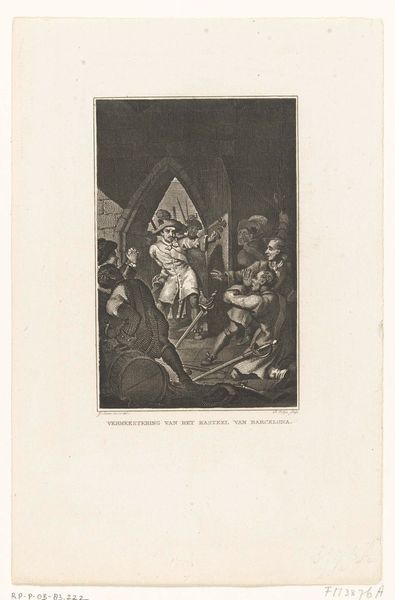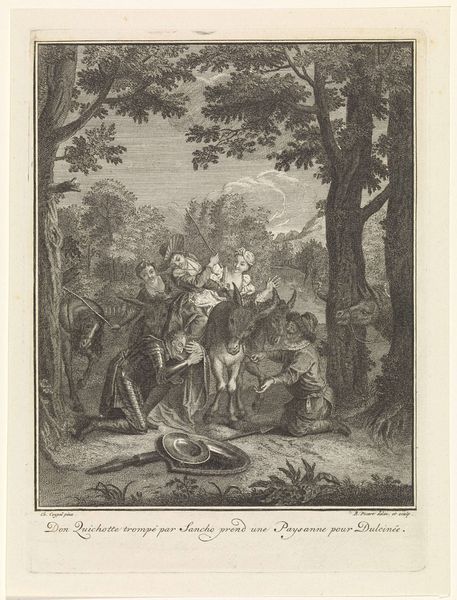
engraving
#
narrative-art
#
figuration
#
romanticism
#
line
#
history-painting
#
engraving
Dimensions: height 143 mm, width 102 mm
Copyright: Rijks Museum: Open Domain
Editor: Here we have Jacob Ernst Marcus's "Radagijs verzet zich tegen zijn Angelsaksische bruid, 534," an engraving from 1818 housed in the Rijksmuseum. The dramatic scene and the stark contrast create a really intense atmosphere, don't you think? I wonder, what's your interpretation of this historical moment captured here? Curator: Indeed, a powerful piece! Looking at it through a historical lens, it is interesting to consider how this engraving engages with the rise of nationalistic sentiments in the early 19th century. Jacob Ernst Marcus presents us with an event from the Early Middle Ages and focuses on themes of resistance. How do you think it reflects Dutch society in the period after the Napoleonic occupation? Editor: I hadn’t really thought about that, I was stuck on the obvious antagonism, the almost theatrical way the subjects are posed, but the context is super interesting! Does it also tap into then-contemporary debates about cultural identity and foreign influence? Curator: Absolutely! Consider how history paintings, especially those depicting scenes of conflict, often served to bolster national pride and legitimize contemporary political agendas. This engraving highlights the heroic resistance to outside influence and resonates with a desire for cultural autonomy, as well as a critique of arranged political marriages that were often perceived as being against free will. To what extent can we see in this artwork not only a historic record, but also the anxieties and hopes of the time when it was created? Editor: Wow, that really changes my perspective. I was so focused on the immediate visual drama, but now I see how the piece functions as a commentary on power, resistance, and identity in early 19th-century Netherlands! Curator: Precisely! By studying historical context, we gain deeper insights into an artwork’s meaning and impact. This engraving becomes more than just a historical scene; it's a mirror reflecting the cultural and political climate of its time. Editor: This was eye-opening. I will remember the cultural context to better appreciate and interpret any work!
Comments
No comments
Be the first to comment and join the conversation on the ultimate creative platform.
